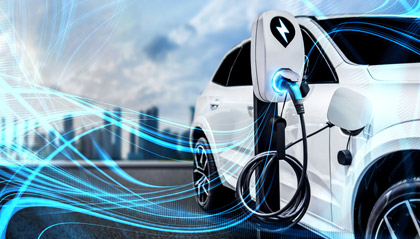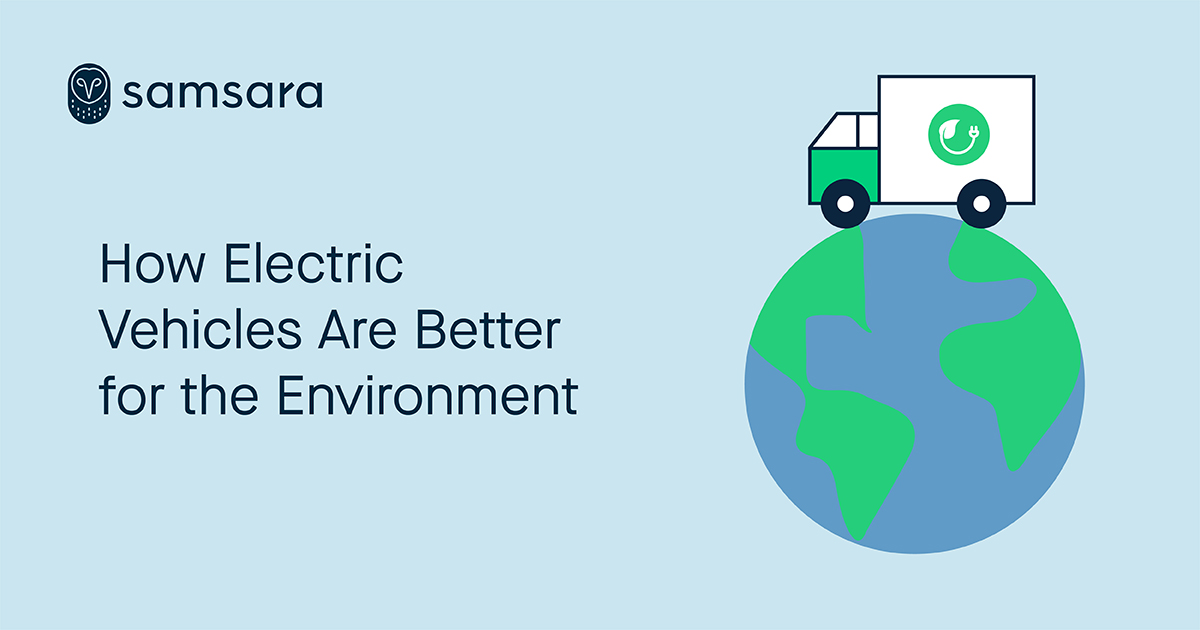We’ve raved about electric vehicles’ sustainability and financial benefits, but there’s more to EVs than just saving bucks and the planet. Shifting from the roar of a gasoline engine to the hush of an electric motor benefits not only our wallet and world, but also our well-being. In this expedition to electric enlightenment, we’re zeroing in on two lesser-known perks: improved air quality and noticeably less noise pollution. It’s high time we explored this convergence of technological progress and personal health. So buckle up, it’s going to be a clean, quiet ride.
What are Electric Vehicles (EVs)?

Electric vehicles, or EVs, represent a paradigm shift in the automotive world, throwing out the traditional combustion engine and replacing it with a quiet, smooth, and emission-free powering system. Underneath their sleek, high-tech exteriors, EVs run on an electric motor powered by a rechargeable battery pack, which can be juiced up from your home power outlet or one of the thousands of charging stations springing up nationwide.
EVs are not to be mistaken as a laughably overzealous tech fantasy. They’re as real as they’re profound in their sizeable impact on the health and wellbeing of citizens and the environment. Foregoing the usual fossils like diesel or gasoline, EVs achieve zero tailpipe emissions, dumping no direct pollutants into the atmosphere. They literally inhale electricity and exhale progress towards a more sustainable future.
A true game-changer in the transportation sector, EVs come in all shapes, sizes, and forms, from seductive sports cars with ludicrous acceleration to economy-friendly city cars, spacious SUVs, and sober-minded sedans. Cool, silent, and especially strong at lower speeds, electric mobility is designed for the urban environment, making city driving less noxious and rowdy.
On the energy efficiency front, EVs are top-notch, converting 59%–62% of the electrical energy from the grid to power at the wheels, compared to a measly 17%–21% for internal combustion engines. Less is more – that’s the mantra of EVs. They maximize performance using minimum energy, squashing the age-old notion that lower emissions must mean lower zest.
Overall, the essence of EVs boils down to more than just a new way to ‘fuel’ a vehicle. It signifies a larger, more conscious effort to reduce our carbon footprint, combat climate change and provide an antidote to the prevalent health issues driven by air and noise pollution. So, buckle up and let’s prepare to shift gears into a cleaner, healthier, and quieter future.
Health Impact of Air Pollution

Undoubtedly, the issue of air pollution clogs both the physical and metaphorical arteries of our society. As emissions from gasoline and diesel vehicles permeate our environment, they introduce harmful particulates and various noxious gases into our air. These shouldn’t be treated as some ethereal or abstract concern. Rather, let’s be clear: these pollutants have a concrete, discernible effect on human health.
From our youngest to our eldest, no one’s immune. Small particulates, often less than a microscopic 2.5 micrometers in diameter, can infiltrate our lung tissue. In the long term, this exposure may amplify the risk of developing cardiovascular and respiratory diseases, including stroke, heart disease, lung cancer, and both chronic and acute respiratory diseases like asthma. Highlighting its severity, The World Health Organization estimates that around 4.2 million premature deaths globally are linked to ambient air pollution, underlining the literal life-or-death significance of this issue.
Moreover, these tiny particulates can sidestep our body’s natural defense mechanisms and enter the bloodstream, reaching virtually every organ. This can trigger inflammation and oxidative stress within our bodies, exacerbating health conditions like diabetes and even notoriously elusive neurodegenerative diseases such as Alzheimer’s.
And that’s just the particulates. We’ve yet to delve into the nasty cocktail of gases emitted by traditional vehicles. Substances like nitrogen dioxide, carbon monoxide, and sulfur dioxide can provoke serious health issues. These range from irritation of the airways and eyes to more serious lung conditions or heart problems. Not to mention the proven link between prolonged exposure to such pollutants and weakened immune response.
Women, children, the elderly, and people with pre-existing conditions are oftentimes at a heightened risk, but let’s be strikingly clear: poor air quality threatens all of us, irrespective of age, gender, or health status.
Thankfully, the advent of electric vehicles presents a tangible pathway towards mitigating this dire health impact. The subsequent sections will further delve into how switching to electric vehicles can alleviate the health burden imposed by air pollution and take us one step closer towards revitalizing our impaired air quality.
EVs and Air Quality Improvement

As we delve further into the impact of electric vehicles (EVs) on air quality, it’s worth recognizing that these vehicles, by virtue of their operational mechanics, contribute significantly to cleaner skies. Traditional combustion engines release an array of pollutants into the environment, including nitrogen oxide, carbon monoxide, and particulate matter. However, their electric counterparts produce zero tailpipe emissions, thereby improving air quality substantially.
To quantify this, researchers have projected that widespread EV adoption could reduce greenhouse gas emissions from vehicles by nearly 60 percent, leading to palpable improvements in air quality. These figures signal the potential of EVs to combat a looming global crisis; air pollution is reportedly responsible for an estimated seven million premature deaths each year. The assurance of cleaner air spells an improvement in public health, leading to less expenditure on health care and an overall healthier populace.
Furthermore, EVs also aid in reducing the concentration of ground-level ozone, a harmful constituent of smog. This pollutant is especially pervasive in urban environments, formed when nitrogen oxides (produced by burning fossil fuels) react with volatile organic compounds in the presence of sunlight. By eliminating the tailpipe releases of nitrogen oxides, EVs effectively diminish a significant source of ground-level ozone generation.
While EVs do require electricity—a resource often generated by burning fossil fuels—the environmental benefits remain noteworthy. This is because, even where the electrical grid may not rely heavily on renewable sources, the emissions associated with generating the necessary electricity for EVs are far less than those linked to fuel-burning vehicles.
Overall, transitioning to a transportation system dominated by electric vehicles stands out as a viable means of achieving improved air quality. Though not without challenges, embracing EVs presents an available remedy for the growing menace of air pollution, fostering better public health outcomes in the process. The rise of electric mobility isn’t simply a technological revolution – it’s a breath of fresh air.
Noise Pollution and EVs

Electric vehicles aren’t just hushed; they’re practically mute, offering a sonic reprieve from combustion-engine cacophony. For city dwellers and others experiencing relentless traffic noise, the pervasive hum and roar of gasoline-powered engines can range from nuisance to a full-fledged health hazard. Noise pollution, after all, is not just an annoyance. Studies have revealed that sustained exposure to high levels of traffic noise can contribute to stress-related diseases, high blood pressure, sleep disturbance, and even heart disease.
EVs being almost silent in operation, benefit not only the driver but also people outside the car—be it on the sidewalks, homes, or offices. The absence of a conventional exhaust system and engine means EVs are naturally quieter than their fossil-fueled counterparts, contributing towards reducing noise pollution while enhancing the overall urban soundscape.
Let us not ignore the fact that electric vehicles are not entirely silent. At low speeds, these vehicles emit a low hum, defined by regulators to warn pedestrians of an approaching vehicle. The objective here is the safety of our pedestrians without adding unnecessary loudness to the environment.
Moving at highway speeds, wind, and tire noise usually predominate, thereby highlighting an often-overlooked fact: much of the noise produced by contemporary vehicles doesn’t stem from the engine at all. Electric vehicles present an opportunity to further reduce this noise by encouraging technological improvements in tire design and road surfaces.
Electric vehicles’ quietness, therefore, is not just about peace and tranquility. It’s about improving public health, reclaiming our streets from noise pollution, and enhancing the quality of thousands of lives. The advent of electric vehicles is not just a transportation revolution, it’s the dawn of less roaring and more peace in our urban spaces.
Challenges and Solutions

While the health rewards of transitioning to electric vehicles (EVs) are significant, there are still a number of hurdles to overcome to truly reap these benefits. But let’s not let a few speed bumps slow us down. After all, solutions are often found on the other side of challenges, right?
First up: range anxiety. This term refers to the fear that EVs don’t possess enough oomph to go the distance – literally. However, technological advancements are rapidly powering along. With battery technology improving significantly every year, the charging capabilities are getting better, and vehicles are being capable of longer ranges. Plus, charging stations are becoming more commonplace, making it easier for EV drivers to top up their battery on the go.
Then there’s the issue of charging infrastructure. If we’re cruising towards an electric future, we need to ensure that people have convenient access to charging points. Thankfully, major cities around the globe are accelerating their efforts to install charging stations. In addition, some solutions include home charging ports and solar-powered charging stations, catering to EV users who might lack easy access to commercial stations.
Another challenge is the initial cost of electric vehicles, which tends to be higher than traditional gasoline cars. However, this initial cost is counterbalanced over time by the savings made on fuel and maintenance. Furthermore, government incentives are being rolled out in various locales to subsidize these costs and make EVs a more appealing option.
Lastly, there is the matter of EV production and its environmental toll. Although it’s true that manufacturing EVs, particularly their batteries, requires massive energy input – a factor often cited by critics – it’s important to bear in mind the overall life cycle. Throughout its lifespan, an EV will generally produce significantly less pollution than its gas-guzzling counterparts, making it a cleaner choice overall.
In a nutshell, though the road to an electric future has its share of potholes, it’s far from impassable. Solutions are already in motion to address these challenges, bringing us ever closer to the benefits of cleaner air and quieter streets. As EV technology continues to move forward, so too will the health of our planet and its inhabitants.
FAQs
What are the health benefits of electric vehicles?
Do electric cars contribute to a quieter environment?
Is the EV movement improving urban life?
Conclusion
In sum, the transformation to electric vehicles ushers in a new era of cleaner air and quieter streets. Beyond their green credentials, these silent crusaders promise a dramatic reduction in noise pollution—a benefit that’s blissfully silent yet speaks volumes. Affordable, eco-friendly and restful, it’s abundantly clear that electric vehicles are no longer the future but the present imperative, steering us on a healthier path with a lighter carbon footprint.
